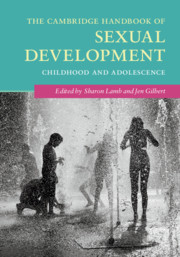Book contents
- The Cambridge Handbook of Sexual Development
- The Cambridge Handbook of Sexual Development
- Copyright page
- Contents
- Notes on Contributors
- Acknowledgments
- Introduction
- Part I What Is Sexual Development?
- Part II How Do We Study Sexual Development?
- Part III Media, Family, Education
- Media
- Family
- 24 Puberty as Biopsychosocial Enfolding
- 25 Stolen Childhood
- Education
- Index
- References
24 - Puberty as Biopsychosocial Enfolding
Mothers’ Accounts of their Early-Developing Daughters
from Family
Published online by Cambridge University Press: 27 December 2018
- The Cambridge Handbook of Sexual Development
- The Cambridge Handbook of Sexual Development
- Copyright page
- Contents
- Notes on Contributors
- Acknowledgments
- Introduction
- Part I What Is Sexual Development?
- Part II How Do We Study Sexual Development?
- Part III Media, Family, Education
- Media
- Family
- 24 Puberty as Biopsychosocial Enfolding
- 25 Stolen Childhood
- Education
- Index
- References
Summary
- Type
- Chapter
- Information
- The Cambridge Handbook of Sexual DevelopmentChildhood and Adolescence, pp. 485 - 504Publisher: Cambridge University PressPrint publication year: 2018



